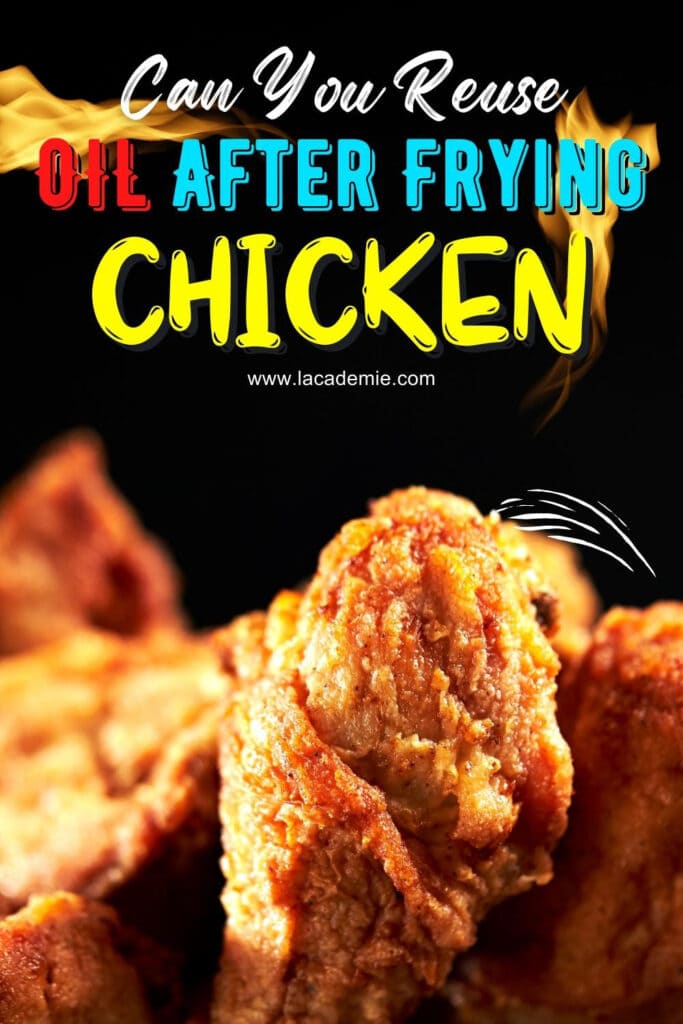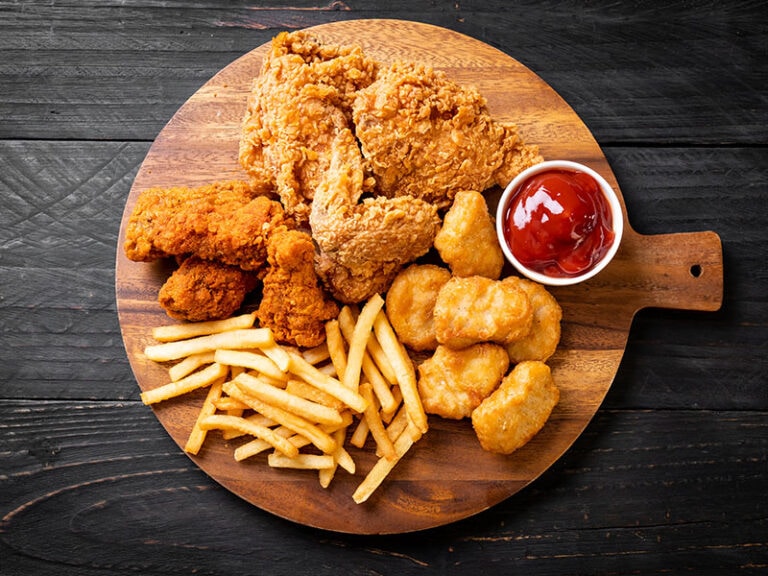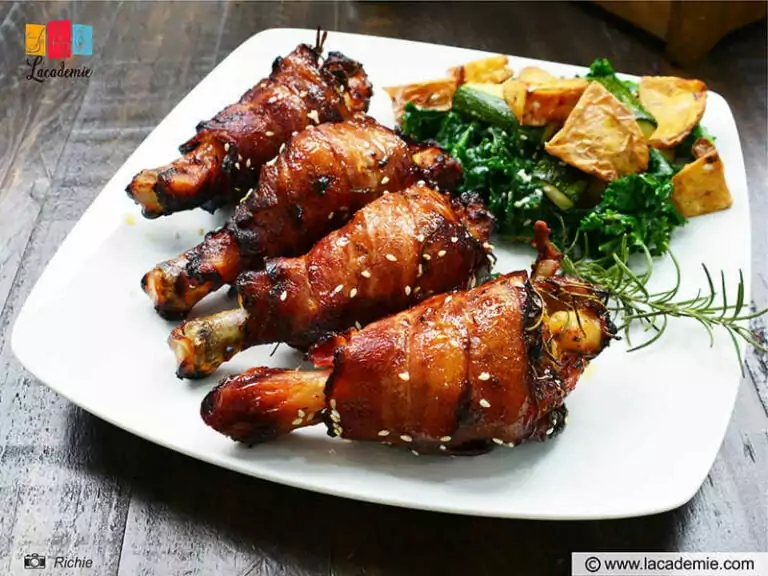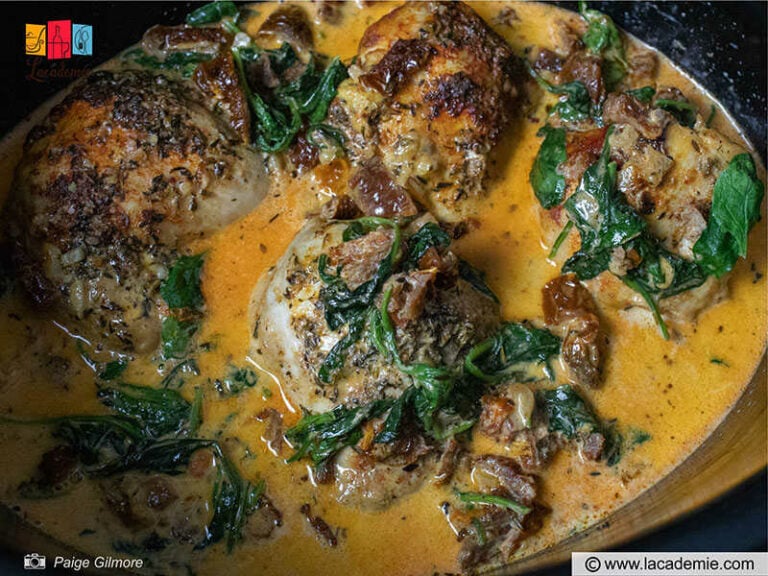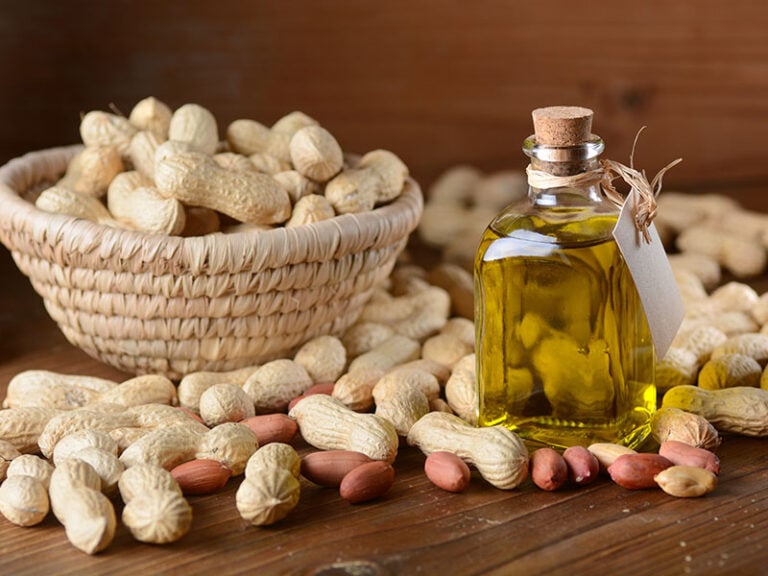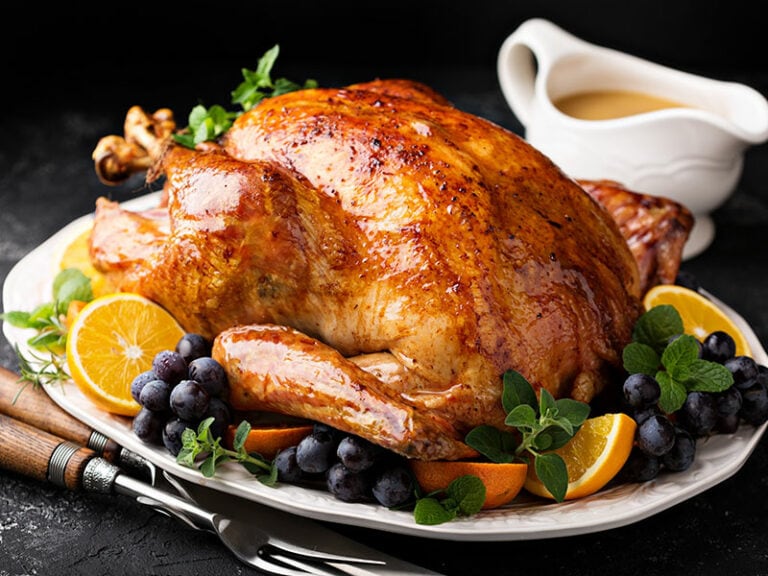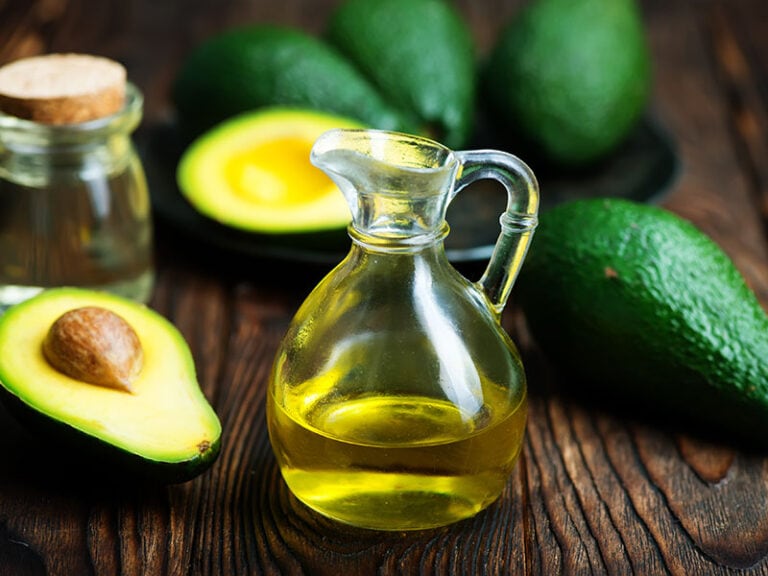“Can you reuse oil after frying chicken?” probably remains a thorny question for most home cooks. The question will be answered in the article. Also, it will present the pros and cons of used oil and how to reuse it safely.
You may have your method of reusing used cooking oil. However, if you want to recycle your oil successfully, I bet you cannot miss this article. So be patient! The instruction on how to reuse cooking oil would change your mind forever.
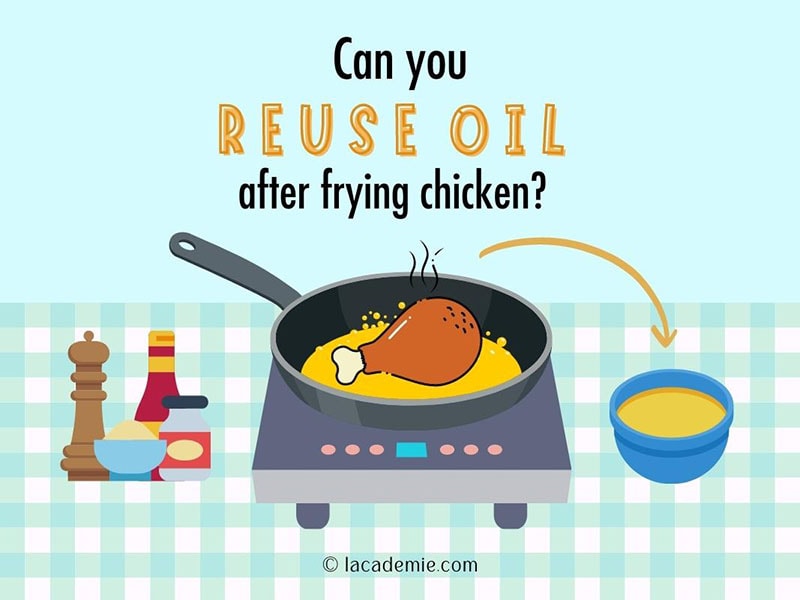
Can You Reuse Oil After Frying Chicken?
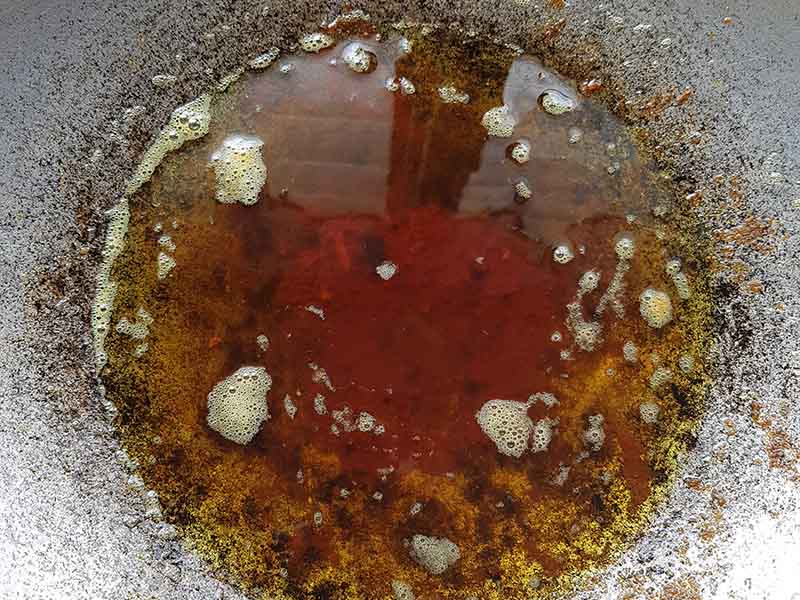
Yes, of course. Reusing oil can bring many benefits such as saving money, time, etc. However, do you really know what used cooking oil is, what kind of oil that can be reused, and what makes frying-chicken used oil different? If not, keep reading to discover!
What Is Used Cooking Oil?
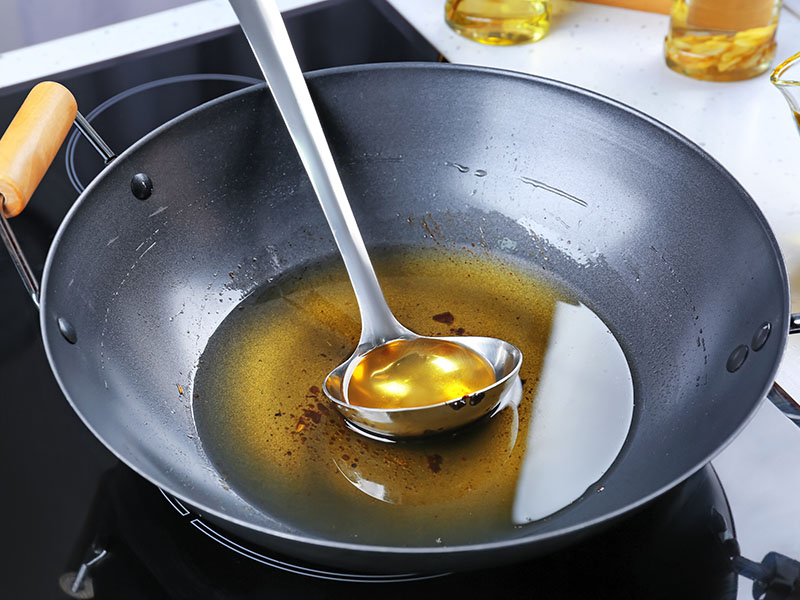
Used cooking oil (UCOs) is made of oils and fats once used for cooking or frying (1). They used to have a bad reputation for unhealthy chemicals; however, used cooking oils have become popular since many people know how to recycle and save them properly.
There are several easily distinguishable features of used cooking oil. You can identify used cooking oil by its smell. Cooking oil reused more than three times has a nasty or sometimes sour smell.
In addition, its taste does not remain as original and fresh as the new one. This kind of oil also gets darker and more cloudy than the new one. If the oil is reused several times, you can even see leftover food residue.
Which Oil Can I Reuse?
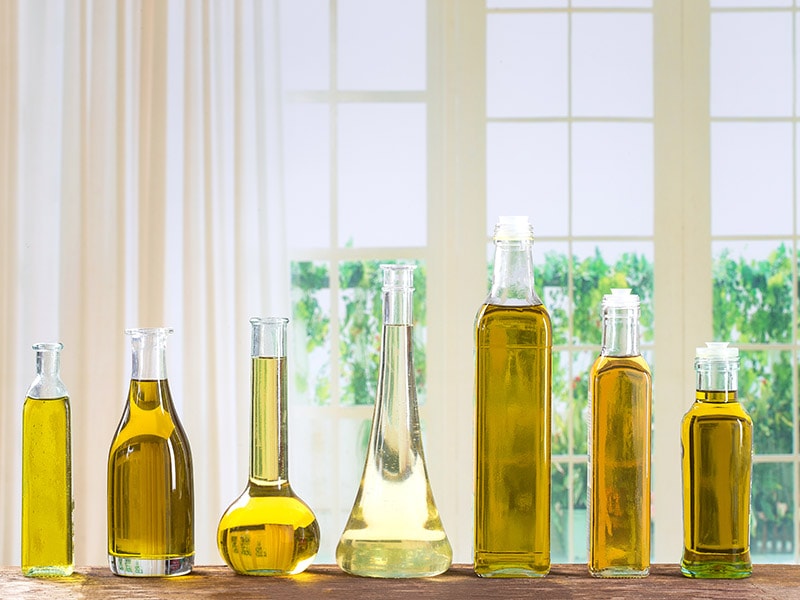
When reusing cooking oil, you will need to determine whether the cooking oil should be reused based on the smoking point.
But what is the smoking point? The smoking point, or the burning point, is the highest temperature the oil can reach before boiling. Above that threshold, the oil starts smoking and smelling unpleasant.
The smoking point varies depending on what kinds of cooking oil. The higher the smoking point is, the more reusable the oil gets. Some oils with high smoking points are safflower oil (510ºF), rice bran oil (490ºF), refined olive oil (465ºF), etc.
What Makes Frying-Chicken Used Oil Different?
So why should you choose to recycle frying-chicken oil, not other kinds of fat? One factor giving this type of oil a big plus point is the high smoking point.
Unlike other cooking methods, deep frying chicken oil should have a high temperature; otherwise, your chicken would take forever to be fully cooked. Therefore, it could be inferred that the oil used for your fried chicken always has a high smoking point, making it suitable for recycling.
Does Used Oil Have A Shelf Life?
You should not recycle used oil that has been out for more than 1-2 months. The recycling times allowed for reusing oil are three, and you should not go beyond that. Whenever there is any clue of a foul smell or taste in the oil, you should throw it away immediately.
Benefits And Disadvantages Of Reusing Oil
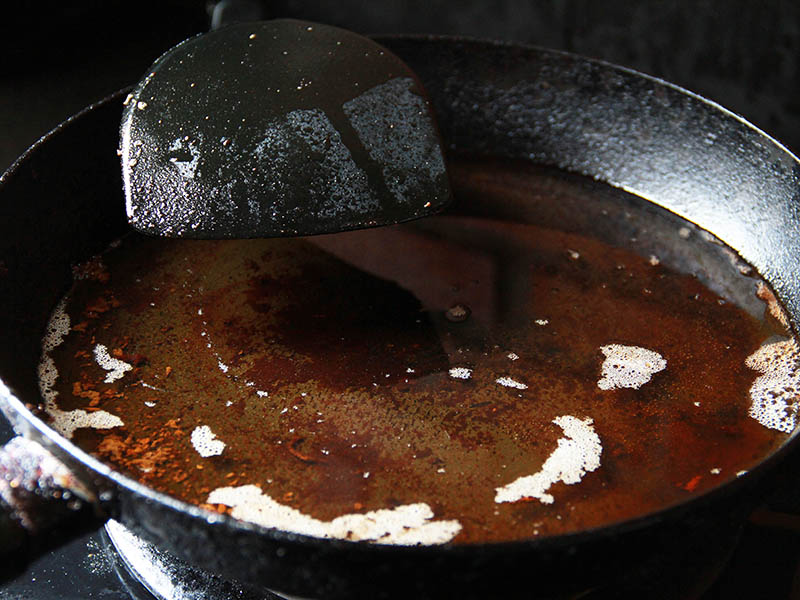
While saving money and cutting waste are the two big plus points of recycling used oil, regular consumption of food prepared in used cooking oil could harm one’s health and increase bad cholesterol.
Since there are many benefits and disadvantages of used cooking oil that you should consider, why don’t you keep following to catch up on more information?
Benefits
Cooking oil is a staple in every kitchen. Many people usually would decide to dispose of the cooking oil in the kitchen drain once used. However, recycling used oil has become a trend, encouraging more people to be environmentally conscious.
Reducing Waste
Reusing helps you also reduce a large amount of oil you would buy for your kitchen tasks. In this way, you would cut down on an equal amount of oil waste.
Furthermore, cooking oil wasted would release a horrible smell and provide a perfect place for the bacteria to grow, affecting the surrounding environment.
Turning Into Biodiesel
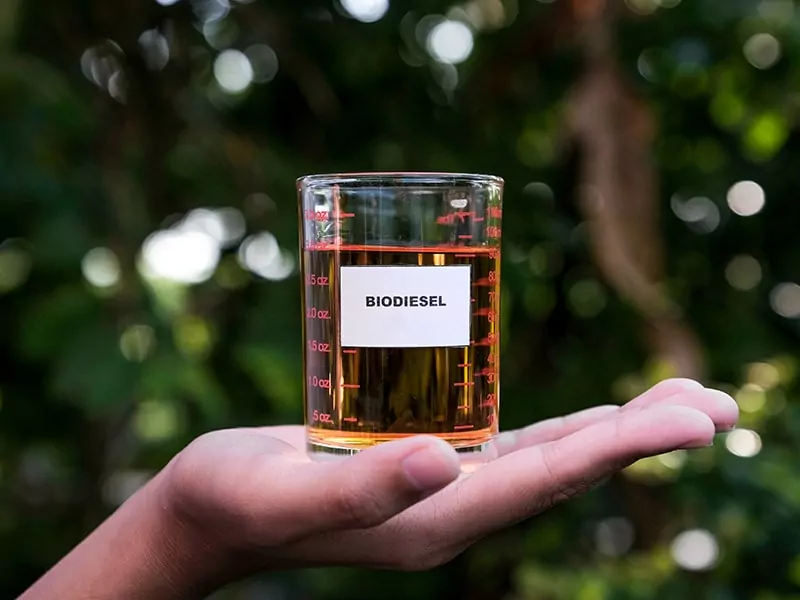
Biodiesel is derived from the triglycerides found in vegetable oils or animal fats (2). Used cooking oil is considered a potential source for producing biodiesel, which is a source of sustainable and renewable energy.
Particularly, inexpensive used oils such as soybean oil, peanut oil, or coconut oil can generate biodiesel. Utilizing as much as used cooking oil not only can save money but generate future energy.
Protecting The Environment
Used cooking oil is a material that can be recycled and repurposed in the production of sustainable energy, including biodiesel. Utilizing the oil decreases a large amount of liquid waste thrown into lakes or rivers, preventing water pollution.
Moreover, used cooking oil could be turned into everyday necessities. For example, you can make moisturizers or soaps by using cooking oil. This again reduces tons of used cooking oil that potentially lead to soil pollution.
Let’s learn more about the advantages of reusing cooking oil.
Saving Money

If you usually use high-quality grapeseed oil for cooking, you might want to reuse it because this oil is quite expensive compared to other oils. It helps you save as much money as possible.
Disadvantages
Besides some benefits of used cooking oil, there are many downsides you should think about; otherwise, improperly cleaned oils may cause your health plenty of trouble.
Increasing LDL Cholesterol
The recycling process of cooking oil yields low-density lipoproteins or LDL cholesterol for short. It is also known as “bad” cholesterol. The more you recook the oil, the more destabilized your oil would be. This would result in increased LDL cholesterol and other toxic substances.
LDL cholesterol and harmful chemicals developed over time can harm your nervous system, contribute to heart disease, and increase the risk of stroke.
Raising The Likelihood Of Cancer
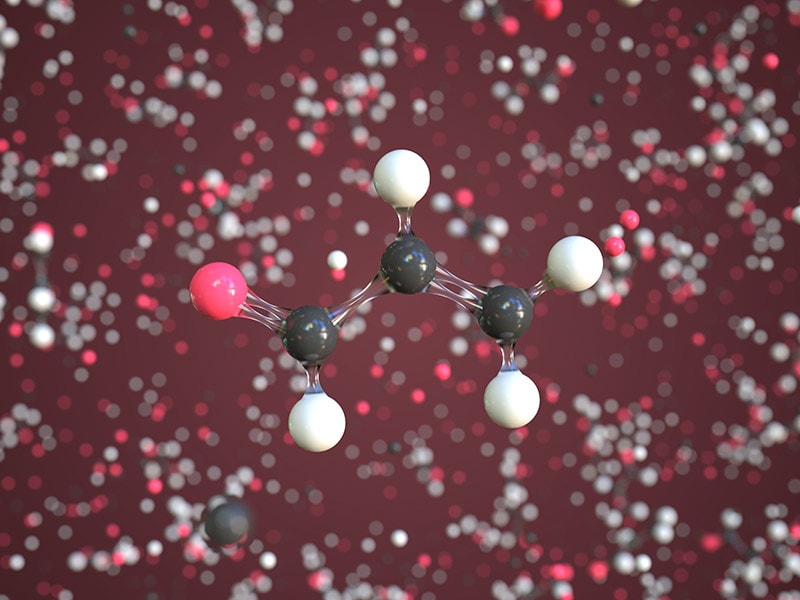
Consuming cooking oil is one of the causes of incurable cancers. When you boil the used oil, the fat is broken down, releasing acrolein. Acrolein is the main factor that causes cancer and affects your nervous system.
Also, these toxic chemicals can be exposed to the air, posing a threat to your nose once you breathe in.
Worse Quality
Of course, in comparison with new cooking oil, the used cooking oil had a rather bad reputation for its flavor as well as color. After the second or the third use, the oil will have an offensive smell and a darker yellow, making it look quite dreadful.
Other Health Risks
When oil reaches the smoking point, it can produce harmful compounds (3). These chemicals, such as toxic aldehydes or oxidants, will likely damage your brain and body if you overeat used cooking oil.
Moreover, used oil that is not adequately purified or cleaned can become a breeding ground for bacteria. Overeating this type of oil is the leading cause of food poisoning.
How To Clean Cooking Oil Effectively?
Cleaning the oil will make used cooking oil safer to reuse, helping remove food residue and deodorize. Furthermore, your used cooking would have a better look and be tastier.
Method 1: Use A Mesh Strainer
Using the mesh strainer to filter out substances is a popular method. One plus point of this method is that it would collect most of the food residue or black stuff in the used cooking oil. However, it would typically take hours for all the oil to go through the strainer.
Step 1: Line Coffee Filter With A Mesh Strainer
The strainer would help you to sieve out any remaining food or any solids, especially after frying chicken. It should be lined with a coffee filter which helps collect substances or burned and black stuff, purifying the oil.
Step 2: Pour The Oil Through The Mesh Strainer
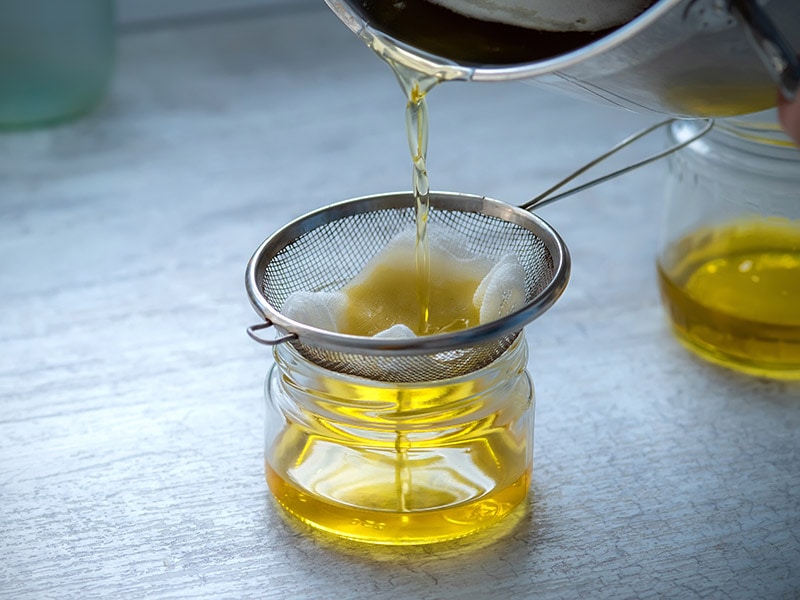
Next, you will pour the oil through a mesh strainer. This is a classic way to purify the used cooking oil, and it is easy to do. Still, this method only removes food residues but can not deodorize the smell of fried chicken sticking to the oil.
Method 2: Use Cornstarch
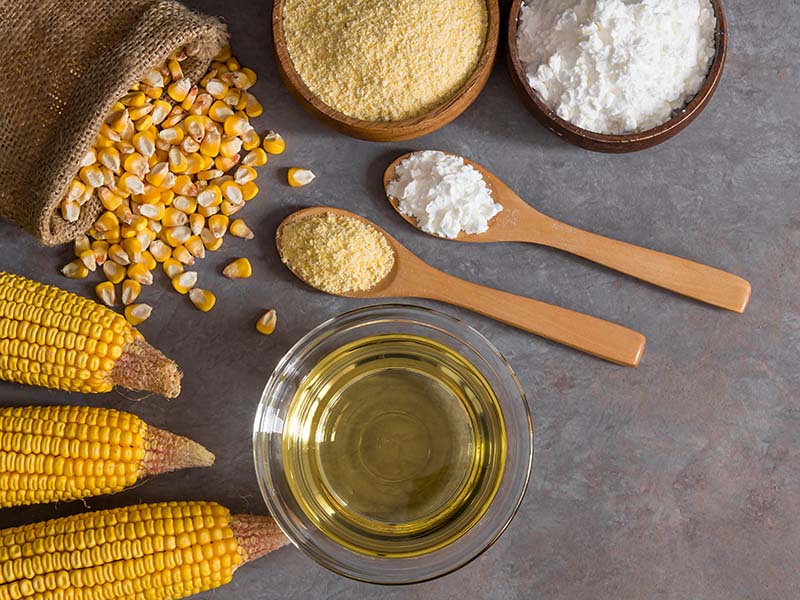
It is found that when cornstarch and water are mixed together, they will create a mixture that can strap and filter solids as well as chicken debris that still remain in the cooking oil. Follow the instructions below. This method would take around 45 to 60 minutes.
Step 1: Prepare The Mixture From Water And Cornstarch
Firstly, you start with the ratio of 4:1 of oil and water with a tablespoon of cornstarch. Since the cornstarch needs to be dissolved into water, you should not pour the powder more than required. Then you will mix cornstarch and water and stir the mixture well.
Step 2: Add the Mixture To The Cooled Oil
Next, you would add the mixture to the oil. Remember the cornstarch when the oil is cool. If not, the heat from cooking oil could thicken the liquid, producing unwanted clumping.
Step 3: Heat The Oil
Then, you gently heat the oil at a low temperature. The cornstarch mixture would attract the solids for easy removal. Make sure that you don’t let the mixture simmer.
Step 4: Stir The Oil
Now, it is time for the stirring step. At this stage, you can use a spatula to stir the mixture. You should stir well around the cooking pot. Constantly stirring the liquid helps the chemical reaction occur in every spot inside the kitchen pot, producing large lumps.
By doing this, it would become an easy joy for you to wipe down undesirable clumpings that remain in cooking oil after you fry chicken meat.
Step 5: Take Out The Gelled Mixture
Then, you should remove the cooking pot from the pan. Slowly pour the mixture through the mesh strainer. Be careful not to spill out the oil; otherwise, your kitchen floor will get slippery.
You can also use the coffee filter to keep the solids from going through with the purified oil. Though this way may consume more time to finish, you can clean the used cooking oil more thoroughly, producing oil with a beautiful yellow and a more original taste.
After sorting out all the sediment, your oil would be a little cloudy. But do not worry, since it will be more transparent once you reheat it.
Step 6: Store In The Fridge
Finally, you can store the oil in a glass bottle and put it in the refrigerator. It is important to use glass instead of plastic or metal bottles since plastic or metal compounds could be dissolved in the oil, having bad effects on it.
Discover more on how to clean used cooking oil at home.
Method 3: Using Gelatin
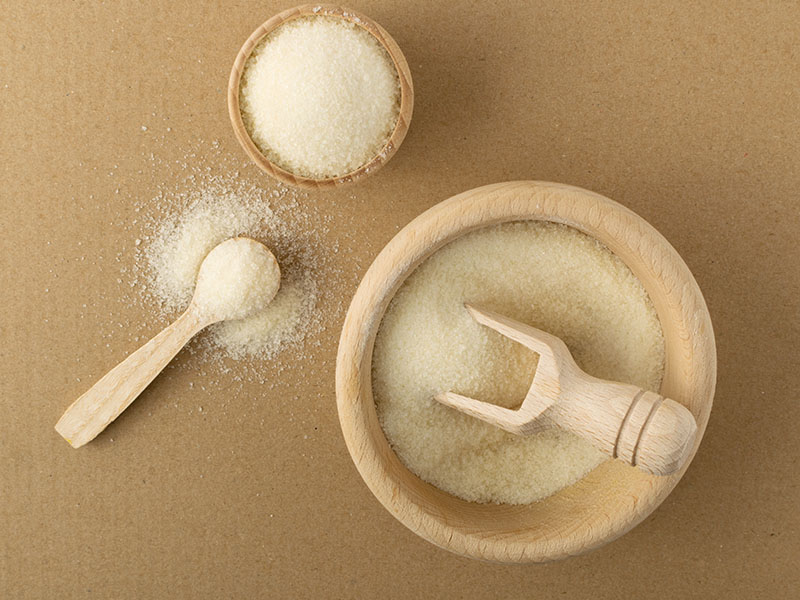
Like cornstarch, the mixture of powdered gelatin and water can collect all the dirt and food impurities before recycling the oil. This method would take around 8 hours until you can finally separate the clean oil from the gelatin gel.
Step 1: Prepare The Mixture
For every part of frying oil, you should mix two parts of water and one teaspoon of powdered gelatin. Then you let the gelatin stay in your cooking pot to let it hydrate for several minutes.
Step 2: Boil The Mixture
Next, you are going to boil the mixture. This step will take around 5 to 10 minutes to dissolve everything. You should only simmer the mixture until the powdered gelatin breaks down.
The dissolving process is necessary since more gelatin molecules would separate from each other, helping the chemical reaction take place everywhere in the pot. The more reactions occur, the cleaner your used cooking oil would be.
Step 3: Pour The Mixture Into The Used Cooking Oil
Now, your job is going to pour the mixture into the used oil. You will want to stir it steadily to make sure the gelatin mixture will collect all of the foodstuffs.
One reminder is to check out the temperature of the oil before pouring the mixture. Ensure it is at room temperature so that there are no undesirable chemical reactions taking place once you fill the cooking pot with gelatin liquid.
You should stir the mixture for around 10-12 minutes before refrigerating the cooking pot. Next, you will wait around 8 hours for the gelatin to become a gel. This method will collect all the food residues that remain in the oil after frying chicken.
Step 4: Separate The Gell And The Oil
Finally, take out this mixture when it’s ready. Your oil must be on the top, and the gell of gelatin will be at the bottom of the pot. You can pour the oil into a glass bottle. At this moment, your oil is ready to be reused.
If you want to purify your cooking oil with gelatin, find out here.
Method 4: Using Onion
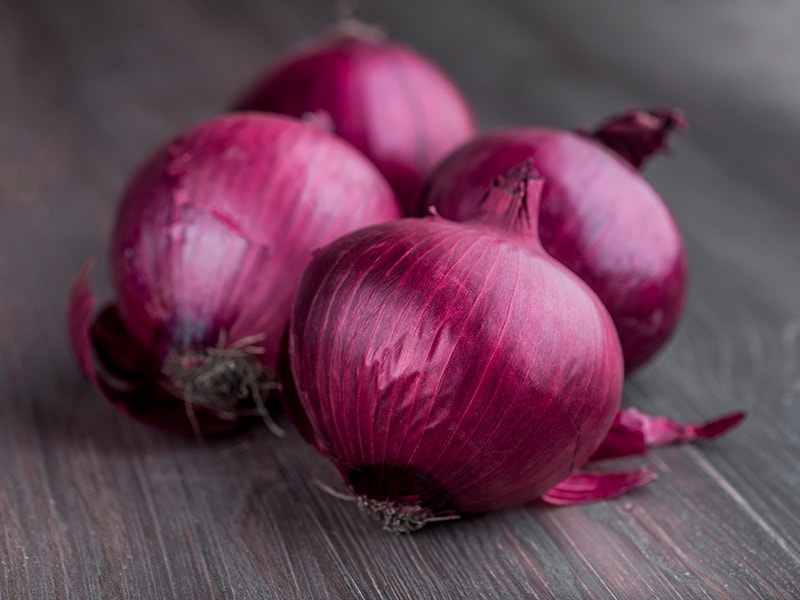
Onions have a good reputation for deodorizing offensive smells. Therefore, they are often placed in the corners or in the kitchen to remove stinkiness. This method would take 10 to 20 minutes to filter all the dirt.
Step 1: Pre-Fry The Onion
First, pre-fry the onions with the used oil on low heat. Onions help deodorize cooking oil and preserve it longer. Remember not to overcook the onion; otherwise, it would be no longer beneficial for purifying the used cooking oil.
Step 2: Filter The Cooking Oil
Next, you should cool the oil. Then, use the filter paper to purify the oil and store it in the glass bottle. You should place the filter paper on top of a funnel to stop food residue from dropping down the bottle.
Exciting Ways To Repurpose Your Used Cooking Oil
Besides using recycled cooking oil for kitchen tasks, you can make use of it for other purposes. Repurposing the cooking oil helps you save lots of money and time on buying day-to-day necessities.
Making Soaps
One great way to repurpose your used cooking oil is to make soap at home. Before making soaps, you should put on rubber gloves to avoid any skin damage.
One reminder is that since the expiration date of the soap is rather short, it is best to use the soap within one month to avoid irritating your skin.
Want to make soaps from the used cooking oil? Check out this thorough tutorial!
Preserving Leather Products
Besides using baking soda to preserve the leather products, you can apply the used oil to your bells, totes, bags, etc., which moisturizes your goods. In addition, cooking oil can remove dirt from sticking to the leathery surface.
Making Lamp Oil
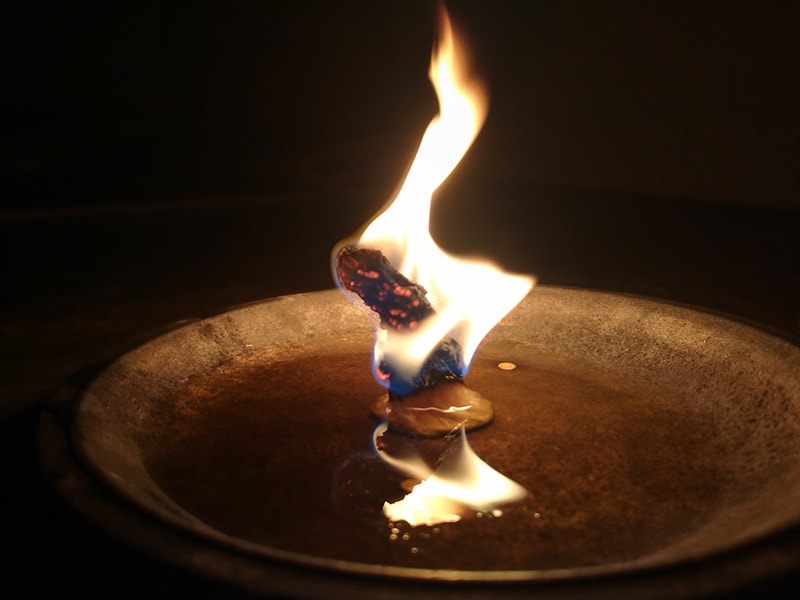
Lamp oil could be made with cooking oil. This kind of lamp oil is very easy to make and useful once your electric lights are out.
Like any fat substance, your used cooking oil could also be beneficial in this way. A plus point is that replacing fuels with cooking oil for lighting helps save energy and money.
Making Moisturizer
After used oil is cleaned with powdered gelatin or cornstarch, one of the ways to repurpose your oil is to turn it into moisturizers. This may seem good news for dry-skin people, and skincare lovers since cooking oil has vital fatty acids, keeping your skin hydrated.
FAQs
I know the provided information above can’t satisfy your curiosity yet. Therefore, I prepare some of the frequently asked questions that relate to the topic for you to discover. Please check it out!
Reuse Oil In A Smart Way
Used cooking usually has a bad reputation for people’s health. However, as long as you can identify which oil can be reused and how to do so safely can reduce the adverse effects on your health. I hope that all the information in the article will help you make the right decision.
And wait! Please share your thoughts and ideas with our beloved readers if you know any methods for reusing used cooking oil that I have not brought up. I would love to hear from you.
If you find the article interesting, why don’t you share the article with your family and friends in case they need it? And are there any other applications of the used cooking oil you may want to add? Let me know in the comment section.
References
- waste4change.com. 2022. 5 Things You Need To Know About Used Cooking Oil.
- nature.com. 2019. Optimized Biodiesel Production From Waste Cooking Oil (WCO) Using Calcium Oxide (CaO) Nano-Catalyst.
- healthline.com. 2018. 4 Healthier Cooking Oils (And 4 To Avoid).
